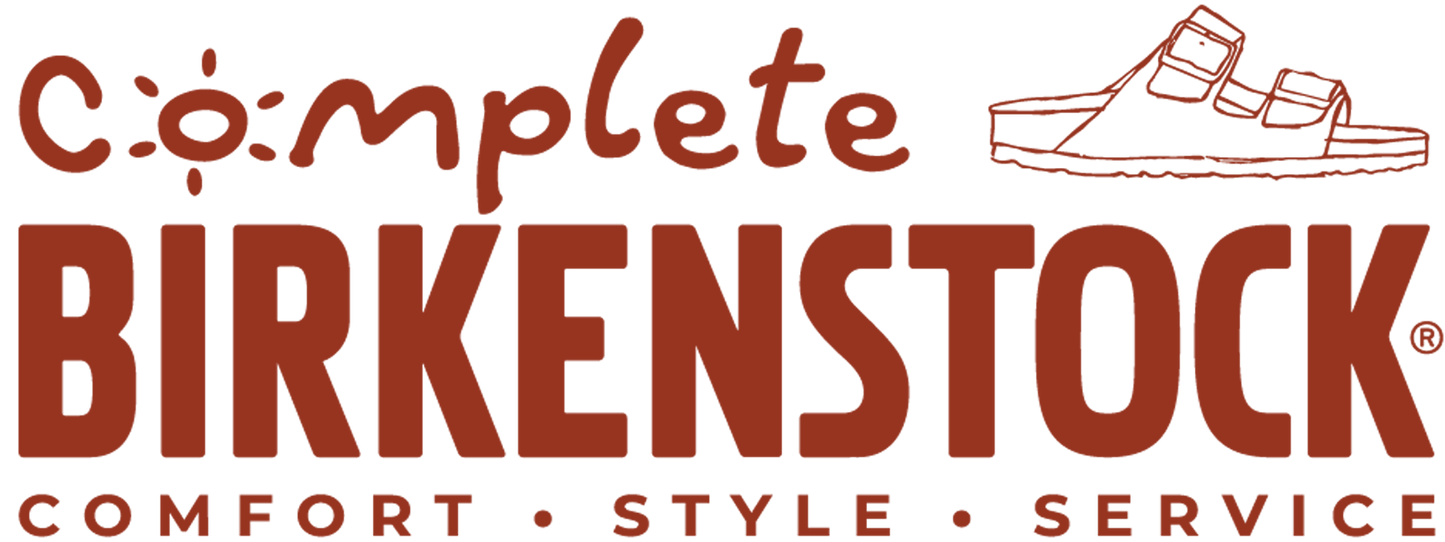

1774
In a small German village, Johann Adam Birkenstock is registered as “subject and cobbler” in the church archives of Langen-Bergheim, Germany.

1896
Master cobbler Konrad Birkenstock (Johann’s grandson) runs 2 stores in Frankfurt, Germany. Then he develops a concept that would literally change the shape of footwear. Although the soles of our feet are curved, shoes had always been flat inside. Konrad theorized that if the shape of the shoes reflected the shape of the feet, greater comfort would be possible. He designs the first shoe with a contoured insole to be used by shoemakers in the production of custom footwear.

1899
Konrad Birkenstock begins giving specialist lectures over a 15 year period for leading master cobblers and guilds to explain his concept of fully malleable, custom-made shoes. He sells licenses allowing others to produce his innovative footbed shoe design.

1902
Konrad Birkenstock develops the first flexible arch support to be inserted in factory-made shoes that have become widely distributed in Germany.

1925
In Friedberg, Germany, a larger factory with extensive grounds is purchased and expanded. A substantial daily production rate is necessary to meet the demands of the company’s large customer base and production runs around the clock in day and night shifts. The “blue footbed” is among the products manufactured.

1932
Carl Birkenstock (Konrad's son) launches the Birkenstock training courses, which are soon highly regarded within the industry. In the years that follow, over 5,000 professionals take part in his week-long podiatry and specialist footwear courses. Leading physicians endorse the courses and the “Carl Birkenstock System”."

1947
"Podiatry – The Carl Birkenstock System" is published with a print run of 14,000 copies. Over 112 pages and with 55 illustrations, Carl Birkenstock expounds his theories about the “natural gait” – the footprint system – and healthy footwear. It is the highest-selling textbook on podiatry of that time.

1964
Karl Birkenstock (Carl's son) takes his grandfather’s contoured arch support concept one step further – as a ready to wear shoe. And the Birkenstock sandal is born. He launches the Madrid model, the first fitness sandal with a deep and flexible footbed, thereby laying the foundation for today’s comfort footwear market.

1966
While on vacation in Germany, Margot Fraser seeks relief from uncomfortable shoes and the tiring effects of walking all day on hard pavement. While visiting a spa during her vacation, someone suggests she try Birkenstock. Margot feels immediate comfort with her first pair of Birkenstocks. Moreover, she finds that the chronic foot pain she had endured for years simply vanished within months after she returned home to California. Convinced of their health benefits, she begins importing Birkenstock footwear to America.

1973
Birkenstock's popularity explodes during the 1970's. The Arizona, a style which has now become synonymous with the Birkenstock brand, is introduced.

1983
"The Birkenstock Foot Primer" by Karl Birkenstock is published with a print run of 360,000 copies.

1985
By the beginning of the 1980’s, Birkenstock is becoming a household name throughout the United States The continually expanding Birkenstock line now features over 40 style/color combinations.

1988
Environmentally friendly adhesives are used in production, setting a new standard for environmental awareness worldwide.

1990
Production is expanded and modernized, to reduce energy consumption by over 90%.

1996
Birkenstock Distribution USA, Inc. celebrates its 30th anniversary. Birkenstock now offers almost 300 style/color combinations, and the footwear is distributed to millions of people throughout the country.

2002
Birkenstock celebrates the 25th anniversary of the Boston clog, born in 1977.

2003
Known as a comfort icon for three decades, Birkenstock’s famous Arizona 2-strap sandal celebrates its 30th anniversary.

2009
A new and larger footbed production facility becomes operational in Gorlitz, Germany.

2013
2013 heralds one of the most significant turning points in the company’s history: Birkenstock becomes a corporation.
The traditional company makes the transition from a loose network of 38 separate companies to a group with three business units (production, distribution, services).
The group is led by an executive team, which for the first time is not composed of family members – an unprecedented event in the company’s almost 240-year history.

2016
Birkenstock celebrates 50 years in the U.S. market.

2017
Margot Fraser, who brought this now iconic brand to the U.S. over 40 years ago, passes away. She was a footwear visionary who believed in the brand's "odd looking shoes" long before they became a comfort and lifestyle staple. Without any traditional retail or footwear experience, she built a multimillion dollar business that brought comfort to millions of people. She did so, always, with a warm smile and a deep belief in the product.
“It is because of Margot Fraser that the Birkenstock brand is enjoying the success that it is today. And it is because of Margot that shoes which are good for you have a place in so many stores and in so many closets across the country." - David Khan, CEO of Birkenstock Americas.

